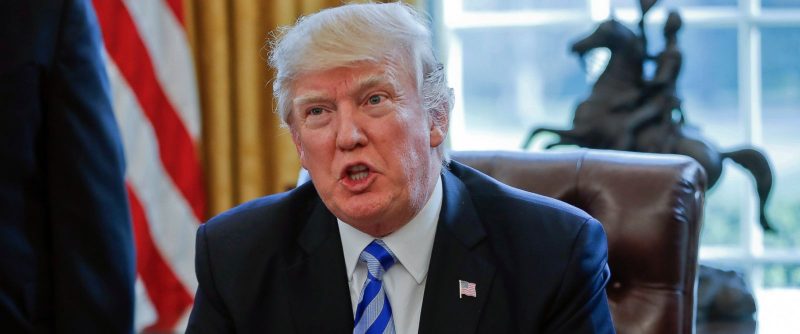A budget proposal released by U.S. President Donald Trump’s administration on Tuesday aims to slash government spending, including by cutting welfare programmes and foreign aid, while bolstering spending on defence and border security.
The Budget Director, Mick Mulvaney, said the 4.1-trillion-dollar 2018 budget was crafted with taxpayers in mind, with the administration asking itself whether it could justify each expenditure.
“Can I ask somebody – a family in Grand Rapids, Michigan – to pay money so I can do X?’’ he said in previewing the budget proposal.
It increases defence spending by 10 per cent, provides for the construction of a border wall on the U.S. border with Mexico, and would for the first time create a paid family leave system for U.S. parents.
The document, which also forecasts spending over the next decade, would result in 3.6 trillion dollars in spending reductions over 10 years.
It does not cut health care for the elderly or the national pension scheme, programmes Trump vowed to protect as a candidate.
However, the proposal was criticised by Trump’s own Republicans and opposition Democrats, with one top Republican, Sen. John Cornyn, describing it as “dead on arrival.”
Members of both parties decried programme cuts, while Republicans at least welcomed Trump’s efforts to eventually balance the budget.
Speaker of the House, Paul Ryan said “congress will take that budget and then work on our own budget, which is the case every single year.
“But at least we now have common objectives: grow the economy, balance the budget.”
Budget Director, Mulvaney, had pointed to major areas of savings from repealing former president Barack Obama’s healthcare reforms, including changes to Medicaid, the health care programme for the poor; food assistance; changes to student loan programmes and pensions for federal workers.
The State Department and U.S. Agency for International Development (USAID) would see a 28 per cent cut, with decreases to foreign aid, the elimination of climate programmes and reductions to U.S. contributions to international organisations, such as the United Nations.
The Homeland Security Department would see an increase of 6.8 per cent to 44.1 billion dollars, including 2.6 billion dollars for construction of a wall along the Mexican border.
The document forecasts future spending to balance the budget within 10 years, assuming three per cent economic growth during the period and a yet-to-be released tax proposal. Economists have derided the growth projections as unrealistic.
The budget would for the first time create a paid family leave system for U.S. parents, Mulvaney said.
The U.S. is the only industrialised nation without such a programme for new parents and the proposal would create six weeks of paid leave.
The budget request being released on Tuesday is a more detailed version of an outline released in March and includes expected spending on mandatory programmes that are not subject to annual congressional approval.
The document, however, is merely a request that outlines the president’s priorities for Congress, which writes its own budget.
The next fiscal year begins October 1, running through September 30, 2018. (dpa/NAN)
FAT/HA


